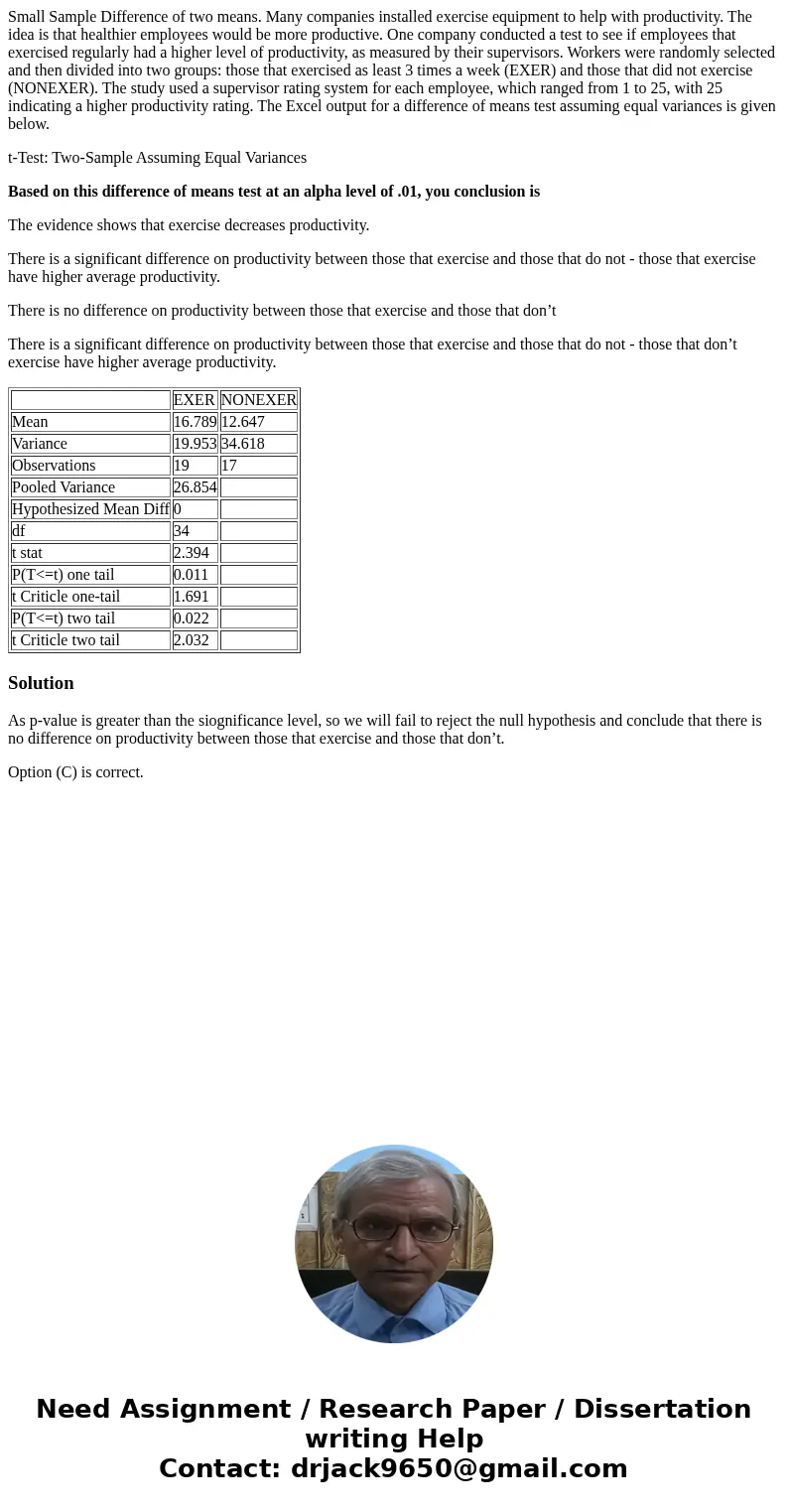Small Sample Difference of two means Many companies installe
Small Sample Difference of two means. Many companies installed exercise equipment to help with productivity. The idea is that healthier employees would be more productive. One company conducted a test to see if employees that exercised regularly had a higher level of productivity, as measured by their supervisors. Workers were randomly selected and then divided into two groups: those that exercised as least 3 times a week (EXER) and those that did not exercise (NONEXER). The study used a supervisor rating system for each employee, which ranged from 1 to 25, with 25 indicating a higher productivity rating. The Excel output for a difference of means test assuming equal variances is given below.
t-Test: Two-Sample Assuming Equal Variances
Based on this difference of means test at an alpha level of .01, you conclusion is
The evidence shows that exercise decreases productivity.
There is a significant difference on productivity between those that exercise and those that do not - those that exercise have higher average productivity.
There is no difference on productivity between those that exercise and those that don’t
There is a significant difference on productivity between those that exercise and those that do not - those that don’t exercise have higher average productivity.
| EXER | NONEXER | |
| Mean | 16.789 | 12.647 |
| Variance | 19.953 | 34.618 |
| Observations | 19 | 17 |
| Pooled Variance | 26.854 | |
| Hypothesized Mean Diff | 0 | |
| df | 34 | |
| t stat | 2.394 | |
| P(T<=t) one tail | 0.011 | |
| t Criticle one-tail | 1.691 | |
| P(T<=t) two tail | 0.022 | |
| t Criticle two tail | 2.032 |
Solution
As p-value is greater than the siognificance level, so we will fail to reject the null hypothesis and conclude that there is no difference on productivity between those that exercise and those that don’t.
Option (C) is correct.

 Homework Sourse
Homework Sourse